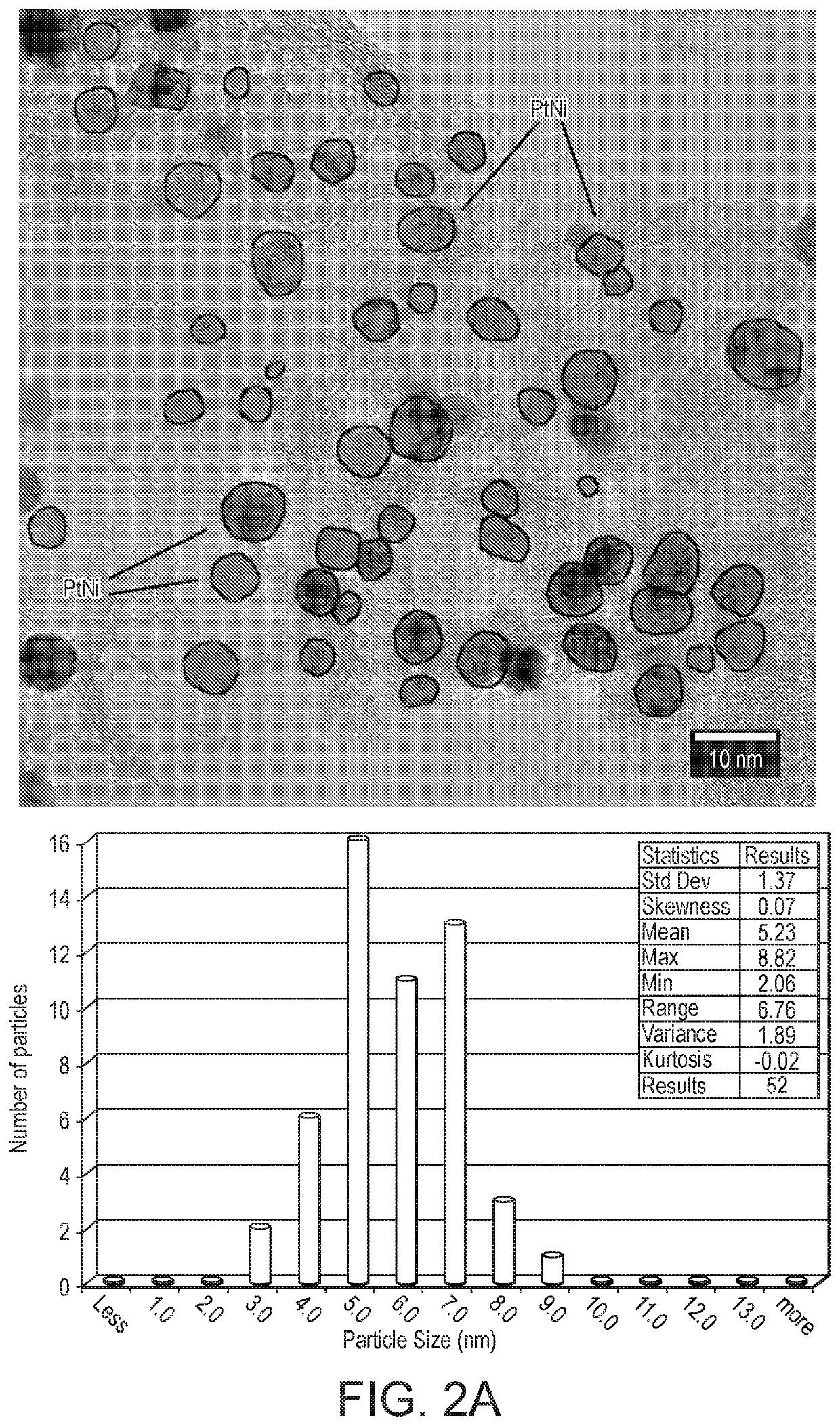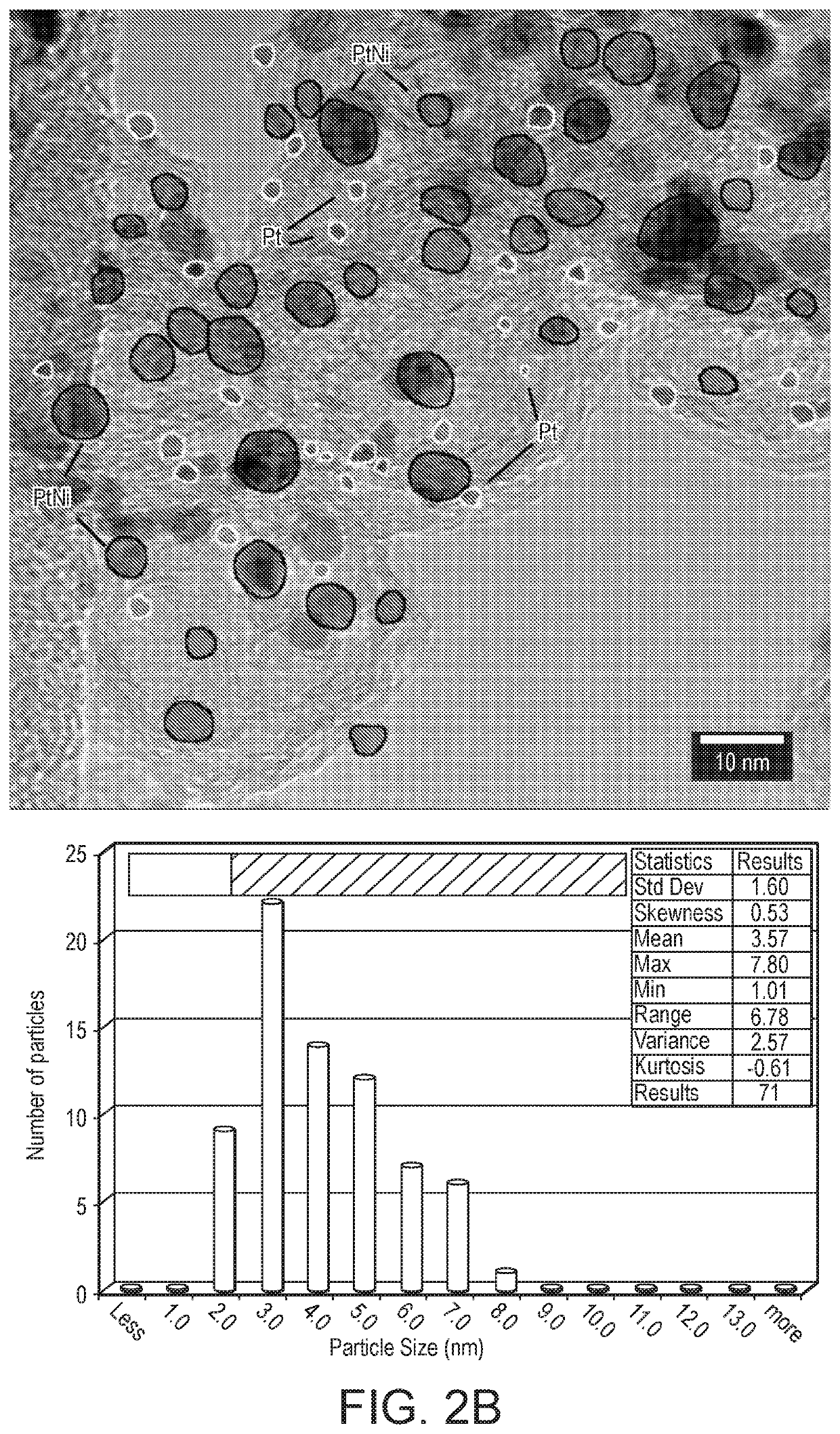Catalyst
a technology of electrocatalysts and catalysts, which is applied in the field of new electrocatalysts, can solve the problems of limited fuel cell performance at high current density, inability to meet the requirements of commercial applications, and inability to meet the requirements of high current density, etc., and achieve the effect of improving fuel cell performan
- Summary
- Abstract
- Description
- Claims
- Application Information
AI Technical Summary
Benefits of technology
Problems solved by technology
Method used
Image
Examples
example 1
oy+Pt) / C
[0085]Preparation of 20 w % Pt PtNi / C
[0086]A particulate carbon black supported nanoparticle platinum (Pt / C) catalyst material precursor was prepared using a method analogous to the general method of preparation of carbon supported platinum catalysts described in WO2013 / 045894. A solution of nickel nitrate (10.66 g; 3.43 g, 0.0585 mol Ni) in water was added (3 ml g−1 C) in aliquots to the dried Pt / C catalyst (19.0 g; 3.8 g, 0.0195 mol Pt) and mixed to ensure a homogeneous dispersion. Once deposition was complete the PtNi / C material was recovered, dried and annealed in a reducing atmosphere of 5% H2 / N2 at 1000° C. for one hour to alloy the platinum and nickel. The alloyed PtNi / C material was then washed in aqueous and subsequently alcoholic H2SO4 solution (20 ml g−1 material) to leach out at least a portion of the Ni; both washing steps were carried out at 80° C. for 24 hours. FIG. 2A shows a transmission electron micrograph (TEM) image of the PtNi / C material prepared and the...
PUM
| Property | Measurement | Unit |
|---|---|---|
| particle size | aaaaa | aaaaa |
| particle size | aaaaa | aaaaa |
| mean average particle size | aaaaa | aaaaa |
Abstract
Description
Claims
Application Information
 Login to View More
Login to View More - R&D
- Intellectual Property
- Life Sciences
- Materials
- Tech Scout
- Unparalleled Data Quality
- Higher Quality Content
- 60% Fewer Hallucinations
Browse by: Latest US Patents, China's latest patents, Technical Efficacy Thesaurus, Application Domain, Technology Topic, Popular Technical Reports.
© 2025 PatSnap. All rights reserved.Legal|Privacy policy|Modern Slavery Act Transparency Statement|Sitemap|About US| Contact US: help@patsnap.com



